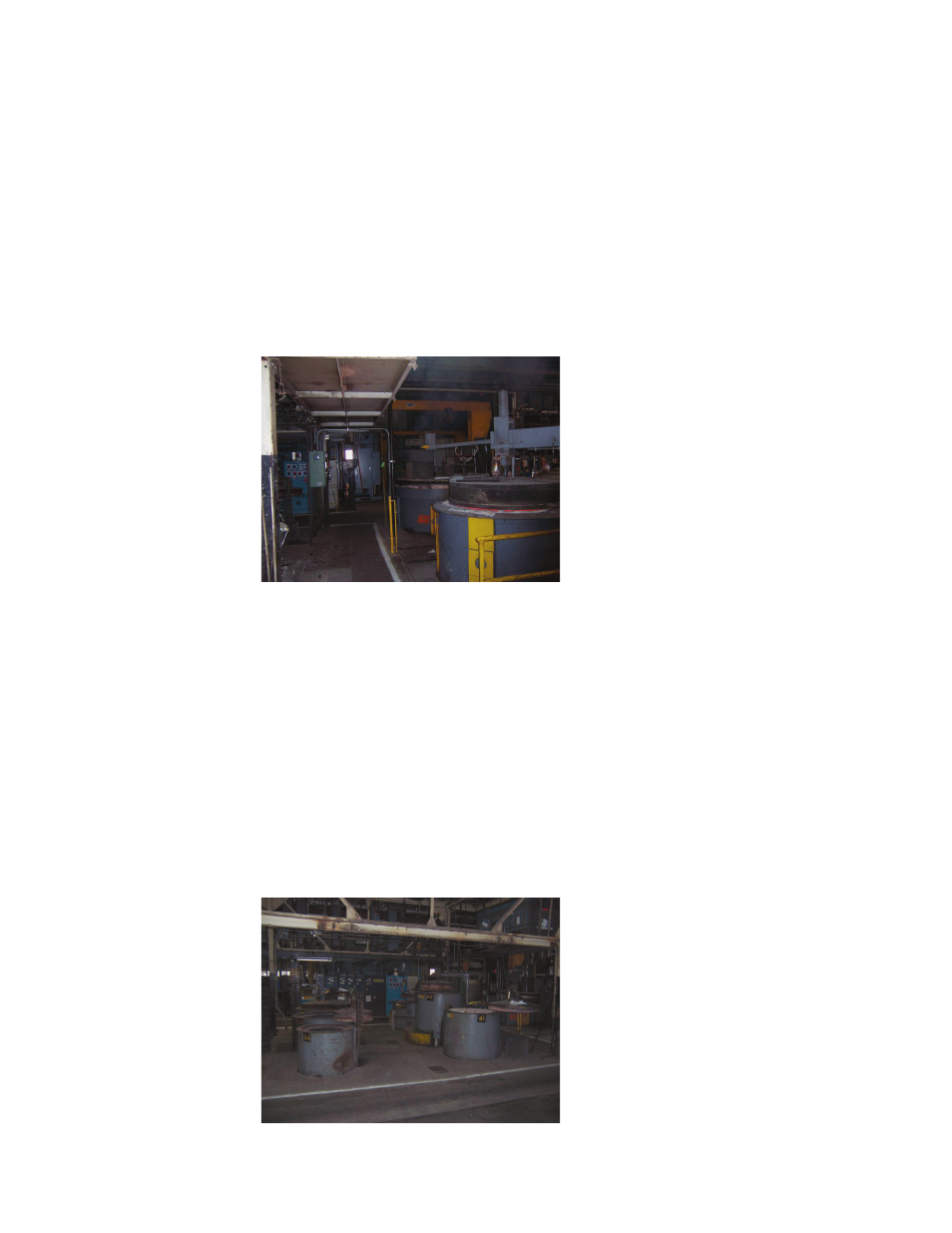Retrotec USACE User Manual
Page 254

D124 ENERGY & PROCESS ASSESSMENT PROTOCOL
Parts are inserted in a furnace to heat them for heat treating purposes or in an
oven to dry them after painting (Figure D198). A door is opened and the parts
are placed inside for a period of time, up to a few hours. A furnace can be as
hot as 1,093 °C (2,000 °F) and a drying oven as warm as several hundred de-
grees Fahrenheit. When the door is opened to remove parts or add new ones,
heat is lost to the surrounding space. Opening a large door releases more heat
than opening a small one. It is thus better to use the smallest furnace or oven
that can accomplish the heating task (Figure D199), as they tend to have the
smallest doors, as well as less surface area to lose heat during operation.
D.7.8.7 Leaks around Furnace Doors (Waste)
Figure D200. Note opening between furnace
and door, where red hot inner surface of
furnace can be seen.
Gaskets are used to seal around openings where doors are located in furnaces
or ovens so that when these doors are closed the inside of the furnace or oven
is relatively airtight. This keeps the heat inside and reduces losses to the out-
side. These gaskets can be made of metal, woven glass fi bers, or other materials
that can withstand hot temperatures. Over time, these gasket materials wear
and should be replaced where they deteriorate to the point that signifi cant leaks
begin to occur. The doors normally have an inner lining that helps insulate them;
if this is damaged, the doors can overheat and become warped. When the door
warps, it does not line up properly in the door opening of the furnace or oven,
and a good seal of this opening becomes impossible (Figure D200). Hot gases
from the furnace or oven then can leak out of these openings and waste energy.
D.7.8.8 Temperature not Reduced in Standby Mode (Waste)
Figure D201. Heat treat furnaces in standby
mode.
